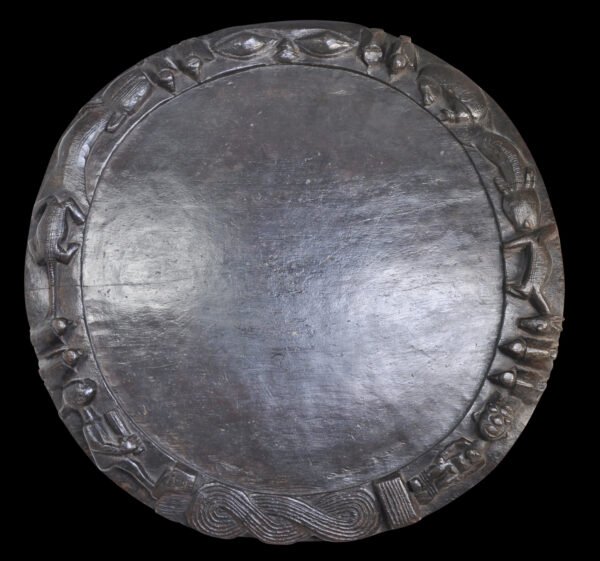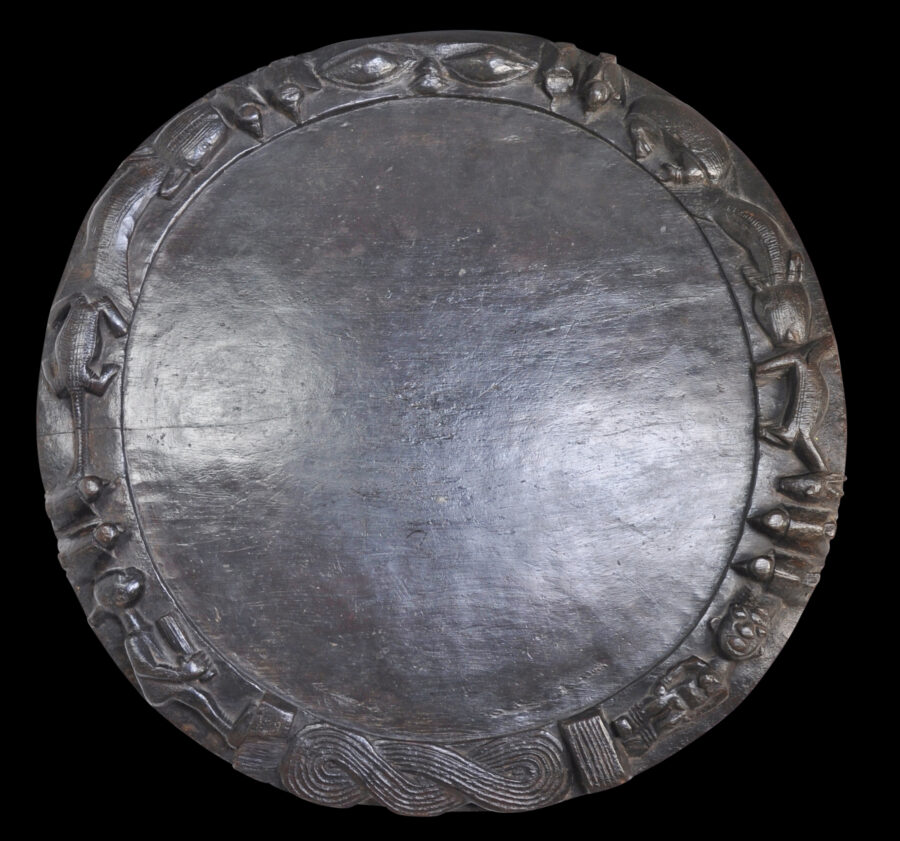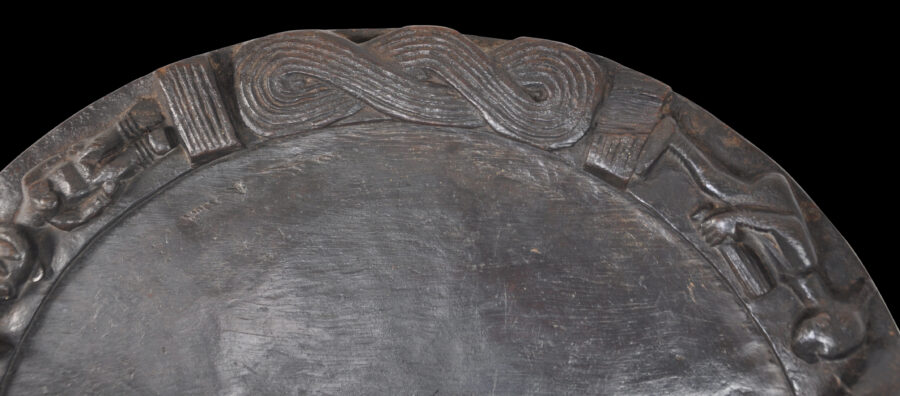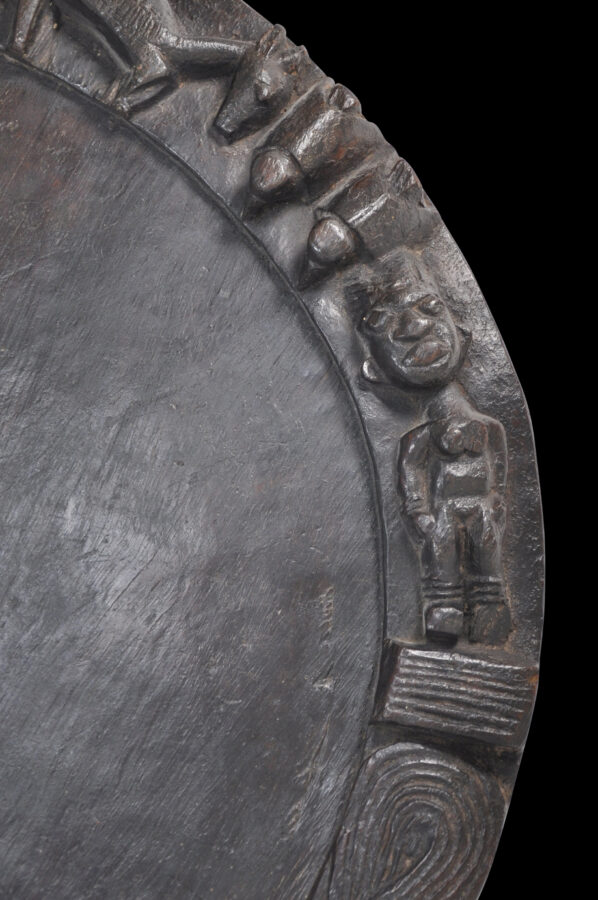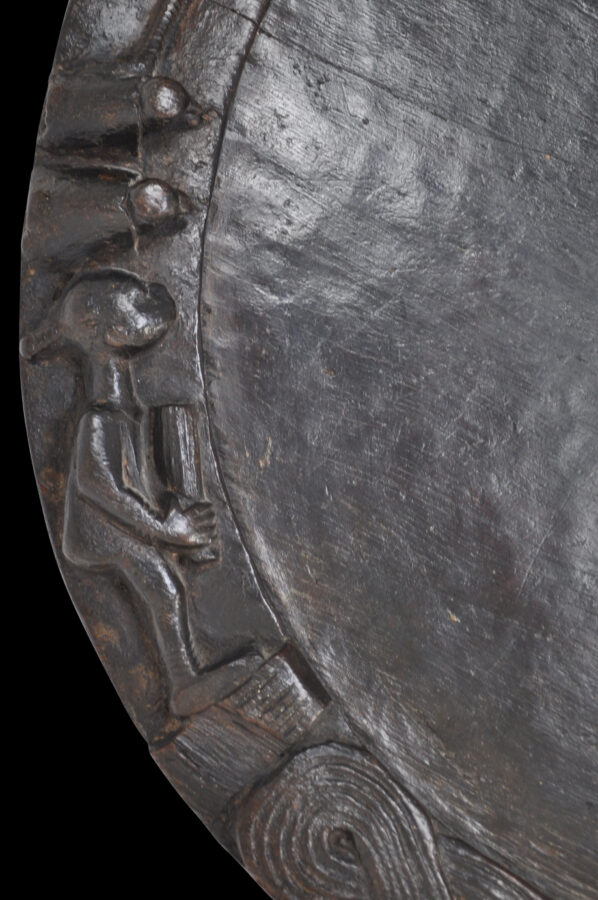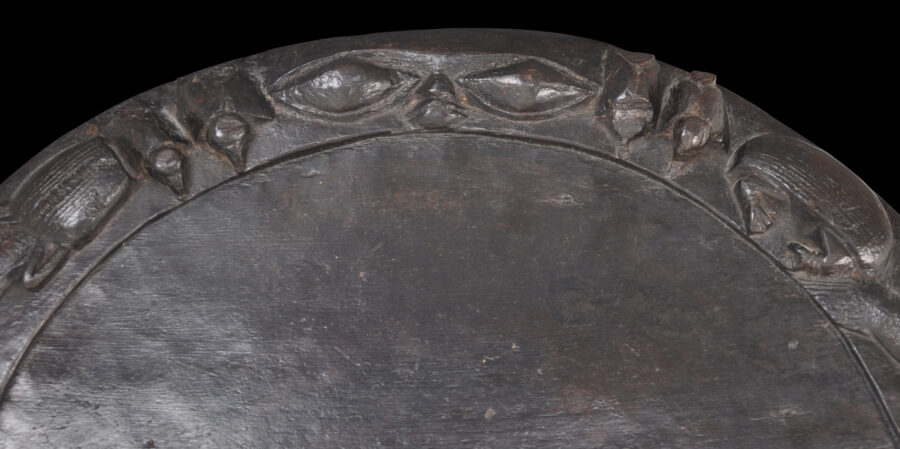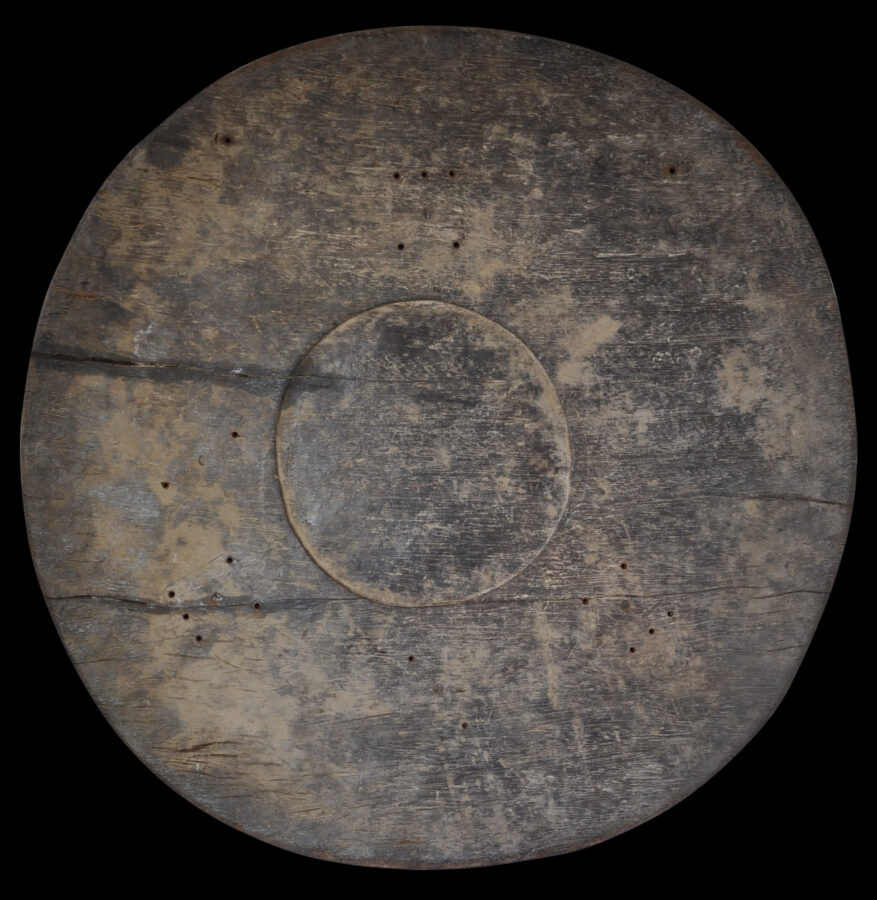Enquiry about object: 9407
Yoruba Large, Circular, Carved Wooden Divination Board (Opon Ifa)
Yoruba People, Nigeria 19th-early 20th century
diameter: (uneven) approximately 53cm, weight: 3,196g
Provenance
UK art market
This large divination board (Opon Ifa) is circular in shape and carved with a prominent face on its top. The face represents Eshu, the messenger deity who acts as a medium between the human and spirit realms. Its eyes are almond-shaped and half-closed. There is also a nose and pursed lips. Overall, the face has a rather sleepy expression!
Other symbolic motifs carved into the rim include sacred mudfish, pairs of birds, an antelope, two human figures and an endless knot.
The presence of mudfish (egedu) is important. The mudfish has an mythical component to the Yoruba, due to its capacity to move between two realms – between land and water. It was adopted as a symbol of wealth and power by the rulers.
The centre of the board has a depression to accommodate the various sacred materials used in the divination process, which includes tapping on the surface with a horn, bone, or ivory tapper. As a consequence, tapping marks can be seen on the surface.
During the ifa divination rituals, a highly-trained priest called a babalawo would make single or double marks in wood powder on the divination board until one of the 256 available odus is created. Odus is a set of traditional verses that represents thousands of years of observation, predictions; and both mundane and spiritual prescriptions.
The term babalawo translates as ‘the father of ancient wisdom’. He is the medium between humans and Yoruba mythical deities such as Orunmila, the spirit of wisdom who governs humans’ destiny and prophecy, and Eshu the messenger who delivers knowledge and guidance in times of trouble. The babalawo would sprinkle pulverised wood or yam flour across the central part of the board and tap rhythmically on it with the tapper (iroke ifa) to invoke the presence of Orunmila. A bowl (agere ifa) was used to contain sixteen sacred palm nuts (ikins), each of which was required to have at least three ‘eyes’. The nuts were then grouped in one hand, and then shifted to the another hand at once. Any palm nuts that remained in the original hand, desirably one or two, were counted and marked, all as part of the process of divining the messages from the deities.
In 2005, UNESCO added the divination system of the Yorubas to its list of ‘Masterpieces of the Oral and Intangible Heritage of Humanity’.
The Yoruba form one of the largest tribes in West Africa. There are 30 million Yoruba people in West Africa. They are predominant in Nigeria where 21% of the Nigerian population are Yoruba. Most still speak Yoruba language. Today, 60% of the Yoruba are Christian and 30% are Muslim. However, many, especially in rural areas, still practise old Yoruba traditions such as Ifa divination.
The divination board here shows good signs of use. It is free or chips or repairs. There is some expected, age-related warping. The reverse has various screw holes from past mounting but this does not affect the front of the board, which has a splendid, dark glossy patina.
References
Abiodun, R., H. J. Drewal & J. Pemberton III, Yoruba: Art and Aesthetics, The Center for African Art and the Rietberg Museum Zurich, 1991.
Bacquart, J. B., The Tribal Arts of Africa, Thames & Hudson, 1998.
Drewal, H. J. & M. T. Drewal, Gelede: Art and Female Power among the Yoruba, Indiana University Press, 1983.
Fagg, W. and J. Pemberton, J., Yoruba: Sculpture of West Africa, Collins, 1982.
Rowland, A., H.J. Drewal, and J. Pemberton, Yoruba: Art and Aesthetics, Museum Rietberg, Zurich, 1991.


